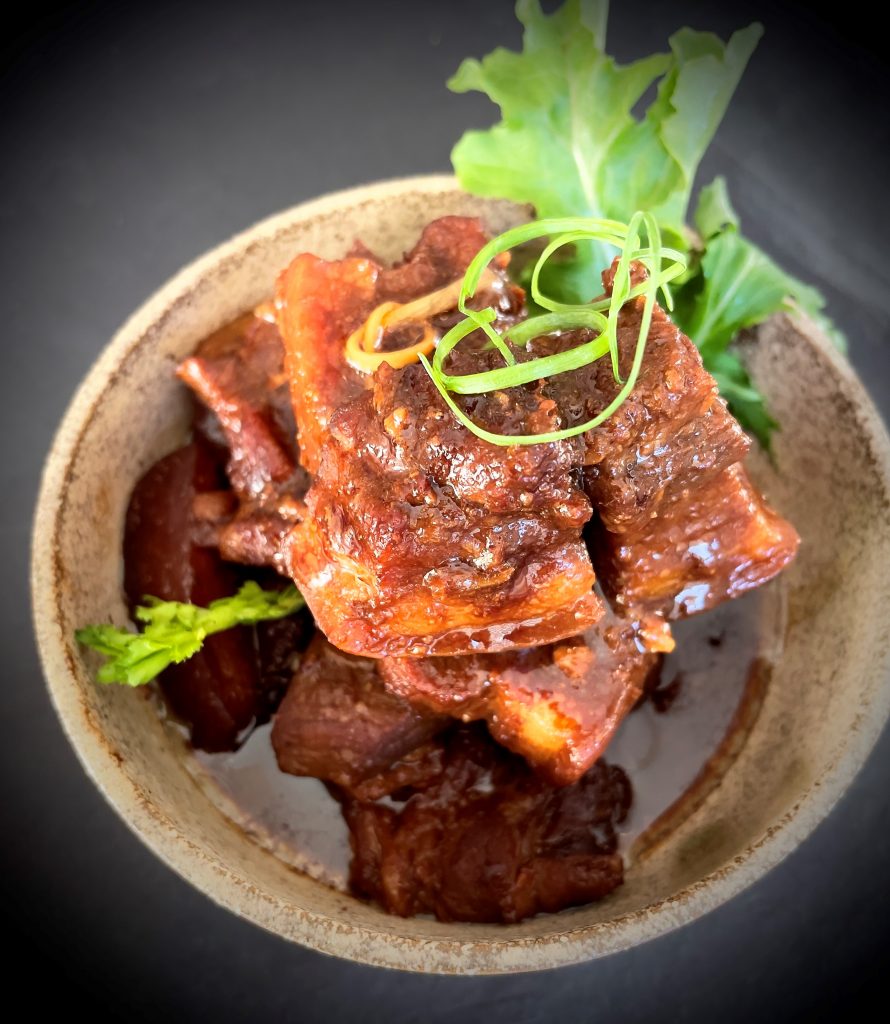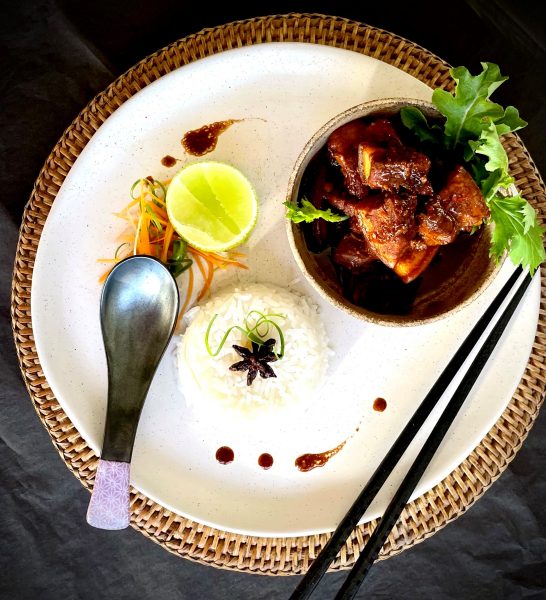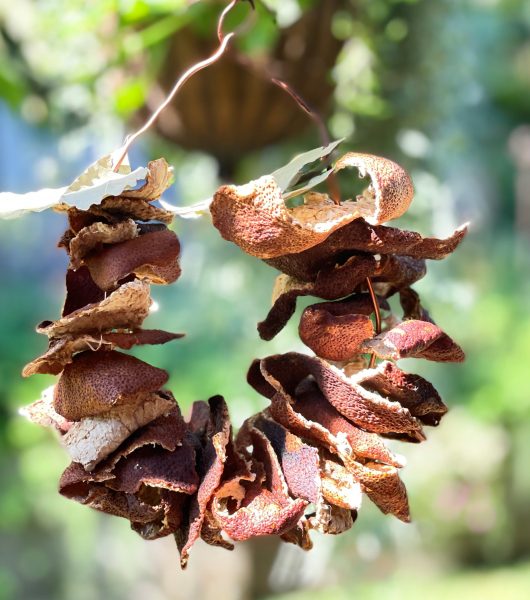Sun Dried Mandarin Peel
The uses and medicinal benefits of lemon and orange rinds are well documented, but did you know that mandarin and tangerine peels are not only edible but often used in Chinese cooking?
This aromatic rind has been a key ingredient in many provincial Chinese cuisines for centuries and is used in savoury dishes, desserts as well as hot brewed drinks, soups and herbal medicine. Imperial mandarins and tangerines are great varieties for drying. One of my all time favourites is Tangerine Peel Meat Balls! I’m also working on creating some quirky cocktails with this magical rind!
This fragrant, bitter sweet ingredient can be easily prepared at home, stored in an airtight jar in the pantry for indefinitely and can be used all year round. Just reserve the mandarin peel after snacking and leave on a tray to dry under the sun until dried and crisp, taking care to keep away from humid conditions. Try to retain a complete peel for easy cooking preparation. Another easy option is to hydrate the peel in the oven. Refer to the method below.
When ready to use, wash and then soak in warm water, preferably overnight, scrape off all the pith, add to your dish and let simmer or steep. One thing to remember, a little bit goes a long way!
Braised Pork Belly with Mandarin Peel, Miso and Mirin Reduction.
Ingredients:
- 1.5 kg pork belly
- 10g dried mandarin peel
- 6 cloves of garlic-finely chopped
- 200g red or dark miso paste
- 150g rock sugar or 1/3 cup white sugar
- 3 tablespoons dark soy sauce or kicap manis
- 1 small star anise
- Water
- 2 tablespoons mirin.
Steps:
- Soak mandarin peel in a small bowl with hot water. Set aside.
- Remove any excess fat from pork. Cut into bite size, approximately 3cm square pieces.
- In a medium size pot pan over high heat, add in pork and stir fry with a wooden spoon to render some of the fat, till the edges turned a golden brown. This may be done in 2 batches. Drain and set aside.
- In the same pot over medium heat, with the residual fat, fry the garlic till fragrant. Add miso paste and 1/4 cup of water. Stir till paste is incorporated with the garlic. Return drained pork into pot and stir to coat. Add sugar, soy sauce and just enough water to cover the pork. Add star anise and cover with a lid and bring to a gentle boil.
- While pork is coming to a boil, remove mandarin peel from water. With a small knife gently scrape the pith off the peel, taking care not to break the rind. It will be difficult to scrape once it is torn. The peel should be slightly translucent when help up against a light. Add scraped peel to the pork.
- Once sauce has turned bubbly, turn heat down to simmer. Let simmer till tender, approximately 40 to 45 minutes. Remove pork from juice and keep covered. Set aside.
- Turn up the heat again to reduce sauce into a glossy slurry. This may take 5 to 8 minutes. Stir occasionally, keeping an eye on the reduction as not to over reduced or burnt. Once sauce surface is covered in tiny bubbles, it is caramelising well and ready. The colour should be a shiny, golden dark caramel. Taste test during last stages of reduction to ensure the flavour is a balance of sweet and salty. Return pork to the reduced sauce, add mirin and stir through. Serve with hot steamy rice or an unsalted vegetable mash.
Oven dried mandarin peel method:
- Preheat oven to 100°C.
- Place the peel on a baking tray and bake for 1 to 2 hours depending on thickness or until crisp.
- Place in an airtight jar, or string them into a wreath and hang in a dry place.
Happy cooking!
Chef Nelly👩🏻🍳



